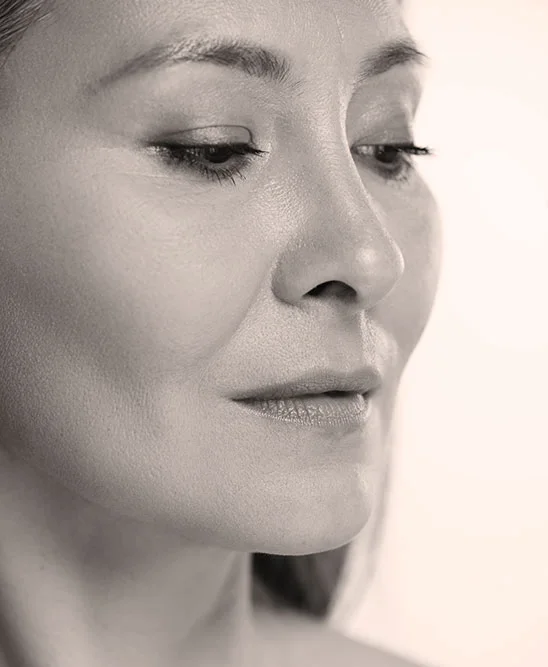Face and Neck Lift
As we age, the skin on our face and neck naturally loses elasticity and collagen, leading to wrinkles, sagging, and volume loss. Facial and neck muscles may weaken, fat can shift or diminish, and environmental factors like sun damage and genetics can further accelerate these changes, resulting in crepey skin, a drooping jawline or “turkey neck,” or a hollowed-out or sunken appearance.
Patients seeking face and neck lift surgery with a Houston board-certified plastic surgeon are typically looking to improve the appearance of wrinkles, sagging skin, and other signs of aging in the face as well as address loose skin and excess fat in the neck area. Dr. Fairchild is a patient-focused surgeon experienced in customizing these surgical procedures to create natural-looking facelift and neck lift results tailored to each individual’s goal.
- What is a Face and Neck Lift?
- Types of Facelift Procedures
- Benefits of a Facelift and Neck Lift
- What is a Neck Lift?
- Preparing for a Face or a Necklift
- The Surgical Process: What to Expect
- Recovery & Aftercare
- How Long Do Face and Neck Lift Results Last?
- FAQs About Face and Neck Lift Surgical Procedures
What is a Face and Neck Lift?
A facelift, or rhytidectomy, is a surgical procedure designed to rejuvenate the lower two-thirds of the face, including the cheeks, jowls, and neck. This procedure removes excess skin and tightens and repositions underlying tissues to deliver a more youthful, refreshed appearance.
When combined with a neck lift, this surgery also addresses sagging skin and excess fat beneath the chin and along the neck. Dr. Fairchild may recommend performing a face and neck lift with other cosmetic procedures such as eyelid surgery (blepharoplasty), a brow lift, or a forehead lift.
Types of Facelift Procedures
Today’s facelift surgery techniques are more customizable and less invasive than ever. During your consultation with Dr. Fairchild, she will assess your facial anatomy and aesthetic goals before determining the best surgical approach.
Mini Facelift
A mini facelift and neck lift focuses on minor corrections, typically involving shorter incisions and less downtime. They are ideal for younger patients or those with early signs of aging.
Traditional Full Facelift
This comprehensive procedure often includes a neck lift and targets deeper facial structures, improving the jowls, neck, and midface.
Deep – Plane Facelift
This advanced technique repositions deeper layers of the face for longer-lasting and more dramatic results, which is ideal for moderate to advanced aging concerns.
Short Scar Facelift
Focused on the lower face and neck, this procedure uses shorter incisions to provide a natural lift with minimal visible scarring.

Benefits of a Facelift and Neck Lift
Patients choose facelift and neck lift surgery for many reasons. The benefits include:
- Improving the appearance of fine lines, wrinkles, sagging skin, and other signs of aging in the face and neck
- Creating a more youthful, refreshed appearance
- Enhancing the definition of the jawline and neck
- Improving the appearance of the neck, including reducing the appearance of a “turkey neck” or “double chin”
- Enhancing self-confidence and self-esteem
- Improving the balance and proportion of the face and neck
- Improving the overall symmetry of the face
- Achieving natural-looking facelift and neck lift results that reflect how you feel on the inside
What is a Neck Lift?
A neck lift, or lower rhytidectomy, is a surgical procedure designed to rejuvenate the appearance of the neck by addressing skin laxity (loose skin), excess fat, and wrinkles in the neck and jawline.
This procedure is particularly effective for treating:
- Loose and crepey neck skin
- Excess fat under the chin
- Muscle banding or visible vertical neck bands
- The appearance of a “turkey neck” or a sagging or drooping neckline
The surgery is often performed in combination with a facelift, as the neck and face often age at the same rate.
A neck lift can be performed in different ways:
- Platysmaplasty, the most common technique, is a surgical procedure that tightens the platysma muscle, which runs from the collarbone to the jawline and is responsible for the appearance of the neck.
- Liposuction, which removes stubborn excess fat deposits.
- Cervicoplasty, which removes excess sagging skin.
Preparing for a Face or a Necklift
Once you’ve decided to explore facelift surgery in Houston, the next step is a consultation with Dr. Fairchild. She will take time to understand your goals, evaluate your health, discuss risks, benefits, and potential complications, and explain whether you’re a good candidate for surgery.
Before your procedure, Dr. Fairchild may ask you to:
- Discontinue certain medications (e.g., blood thinners)
- Stop smoking and limit alcohol intake
- Maintain overall good health
Once you’ve decided to schedule your procedure, Dr. Fairchild will provide detailed instructions on preparing for surgery. Be sure to follow these instructions carefully. Having realistic expectations and being mentally and physically prepared for your surgical procedure and recovery process is important.


The Surgical Process: What to Expect
How is a Neck Lift Performed?
A facelift is an outpatient surgery performed with sedation under general or local anesthesia. Dr. Fairchild develops a custom surgical plan for each patient; the procedure’s specifics can vary depending on the patient’s individual needs.
Generally, a facelift begins with Dr. Fairchild making predetermined incisions in strategic locations, such as in front of the ears, under and around the earlobe, and sometimes extending into the hairline. She then lifts the skin, tightens the underlying muscle and tissue, and removes excess fat. She re-drapes the remaining skin over the newly contoured underlying structures and excises excess skin. Finally, Dr. Fairchild will close the incisions with sutures.
How is a Neck Lift Performed?
A neck lift is also an outpatient surgery that can be performed under general or local anesthesia. Like a facelift, the specifics of a neck lift procedure can vary depending on the patient’s unique anatomy and cosmetic goals; however, neck lift surgery generally begins with Dr. Fairchild making incisions behind each ear and sometimes under the chin. She will lift and tighten the underlying muscle and tissue, removing excess fat. Liposuction may be used to remove excess fat from the neck area if needed, and in some cases, Dr. Fairchild may remove a small amount of excess skin to improve the contour of the neck in a technique called cervicoplasty. The last step in a neck lift is closing the incisions with sutures.
Recovery & Aftercare
Recovery after a facelift and neck lift varies by individual but typically involves a few days of rest, followed by several weeks of gradual healing. Expect some swelling, bruising, and tightness, particularly around the jawline and neck. This will gradually subside over the course of a few weeks.
Plan accordingly—for a few days after the surgery, you will need to arrange for someone to help you with your daily activities. You should also prepare your home by arranging meals, stocking up on necessary items, and making sure that you have a comfortable place to rest.
To support a smooth recovery, Dr. Fairchild will provide:
- Detailed post-operative care instructions; light lymphatic massage be included as part of the healing process
- Recommendations for managing swelling and discomfort
- Pain medications as needed
- Guidelines on activity restrictions, such as resting for several days and avoiding strenuous activities for the first few weeks
Several follow-up appointments to ensure you’re healing optimally
Dr. Fairchild will provide a protocol for keeping the incision sites clean and dry and instructions for optimal scarring. Once the swelling and bruising subsides after a few weeks, the final results from a face and neck lift are typically visible.
How Long Do Face and Neck Lift Results Last?
Facelift and neck lift surgery results are long-lasting—often 8 to 10 years or more. However, your face and neck will continue to age naturally over time. You can help preserve your results by protecting your skin from the sun, avoiding smoking, and maintaining a healthy lifestyle.
FAQs About Face and Neck Lift Surgical Procedures
What is the Difference Between a Facelift and a Neck Lift?
A facelift targets the mid-to-lower face—addressing sagging in the cheeks, jawline, and jowls—while a neck lift focuses on tightening the neck, removing fat, and refining the jawline. Many patients benefit from combining both procedures for a more harmonious result.
Will I Have Visible Scars?
While all surgeries involve incisions, Dr. Fairchild places them in natural creases or along the hairline to minimize visibility. With proper care, facelift and neck lift scars fade significantly over time.
Can I Combine a Face and Neck Lift with Other Procedures?
Yes. Many patients choose to combine face and neck lift surgery with procedures like a brow lift, eyelid surgery, or fat grafting for more comprehensive rejuvenation. During your consultation, Dr. Fairchild will help you determine the best combination to meet your goals.
Why Choose Dr. Fairchild in Houston
Dr. Berry Fairchild is a board-certified facial plastic surgeon known for her precision, artistry, and compassionate approach. She believes the best surgical outcomes begin with trust, education, and personalized care. Whether you’re interested in a neck lift for sagging skin, a facelift for wrinkles, or a combination of both, Dr. Fairchild will work with you to create a result that feels authentically you.
If you’re ready to explore your options for face and neck lift surgery in Houston, contact our office today to schedule a private consultation.